I met with Dominican artist Leslie Jiménez in her studio/home in the Washington Heights neighborhood known as Little Dominican Republic. Her tidy hallway– lit by bare Edison bulbs dangling from knotted red cables–acts as a retrospective of the artist’s work spanning a decade. She welcomed me into her space and politely asked me to add my shoes to the pile near the door because her daughter likes to “act like a snake.” Her studio moonlights as a living room–with one wall hosting a large drafting table and equally-as-large flat-screen television; and an adjacent wall supporting several very organized shelves housing materials from paint, ink, brushes, plastic pink babies, and found knickknacks, including broken toys.
The corner apartment overlooks the rolling hills of upper Manhattan with large windows on either side. Her family is surrounded by the food, music, and language of her native country, but are thankful to be living in the US. Jiménez was born in Santo Domingo where she spent hours watching her mother perform Dominican blowouts in her salon; sitting in the chair herself as much as twice a week. There, society equates straight hair with economic stature and the Eurocentric preference is often enforced with unwarranted public shaming and harassment. The ritual of straightening is performed weekly, lasting the better part of the day and often incorporates food, drink, and music. She began resisting this practice several years before moving to the US, often enduring harsh unwanted criticism. The artist has grown to resent that in her country, wearing her hair au naturel is a form of protest.
Talking about hair is a recurring subject for the artist. “I feel a compelling responsibility to talk about it,” she explains. She began collecting her curls years ago, knowing they would be used for an exhibition which finally came to fruition last year. She says, “I believe in challenging our traditions for a better understanding of our history and personal story. I’m interested in understanding the way imposed standards of beauty and behavioral patterns encourage self-denial, internalized racism, and the tendency to diminish the sense of self in young girls.”
There is a denial of the history that we share with Indigenous, hispanics, and Slavery…to me, as an artist I have the responsibility to keep that conversation alive.
The artist’s technical skills are a reflection of her impressive drive to learn. She spent the better part of 2005 to 2012 developing her voice at the School of Visual arts in the Dominican Republic, the prestigious Altos de Chavón School of Design, secluded on a mountaintop overlooking the Chavón River, and Parsons School of Design in New York. She was working as a conservator at the Archivo General de la Nación when she applied for the scholarship that brought her to the city and changed her life.
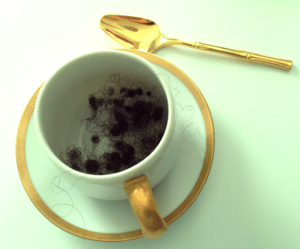 When she puts her mind to something, there is very little she can’t accomplish, including keeping her growing collection of tiny objects from her husband who is already convinced she is a hoarder. Determined to avoid all possible distractions, Jiménez brushed off her first encounter with her future spouse in the Dominican Republic to focus on learning English for her impending move. Thankfully, they got a second chance in New York, marrying a few years ago, and welcoming their daughter shortly after.
When she puts her mind to something, there is very little she can’t accomplish, including keeping her growing collection of tiny objects from her husband who is already convinced she is a hoarder. Determined to avoid all possible distractions, Jiménez brushed off her first encounter with her future spouse in the Dominican Republic to focus on learning English for her impending move. Thankfully, they got a second chance in New York, marrying a few years ago, and welcoming their daughter shortly after.
Even before deciding to become a mother, the artist created inspired works about the ‘humble heroes’ of the child care system. She explains the impetus for the projects came because she would “see these women, working every day, mostly speaking Spanish, of Puerto Rican, Dominican, or Mexican descent.” Her admiration comes from knowing that as immigrants, many of them are here without family and must secure care for their own children before helping to raise others.
When you think about it, they are the foundation of the working-women force…We look at them like they are not remarkable, but they are because they provide an enclosed, beautiful, Secure environment for our children.
Unexpectedly, Jiménez began to experience inexplicable pain and discomfort including tremors. “The heart I made  last year… when I got sick.” She explains, “we didn’t know what was happening, but I felt like the connection between my brain, heart, and my hands were in a temporary shut-down.” Unable to focus on anything else, the artist became introspective. “I decided to leave it like this… a work in progress that doesn’t necessarily have to be finished,” referencing the incomplete border. The volume bar reminds her to listen to her body and to react to the warning signs.
last year… when I got sick.” She explains, “we didn’t know what was happening, but I felt like the connection between my brain, heart, and my hands were in a temporary shut-down.” Unable to focus on anything else, the artist became introspective. “I decided to leave it like this… a work in progress that doesn’t necessarily have to be finished,” referencing the incomplete border. The volume bar reminds her to listen to her body and to react to the warning signs.
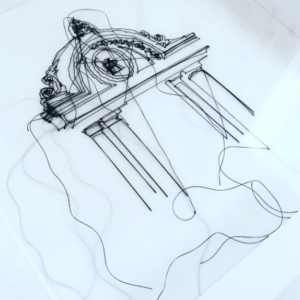 While trying to pacify the tremors, the artist uncovered a talent of sketching with needle and thread. Her portraits of classic New York architecture are stunning. Small white shadow boxes display the wily threads creating an imaginative dimension. An unbelievable attention to detail and complementary vantage points on layered parchment paper add depth and intrigue.
While trying to pacify the tremors, the artist uncovered a talent of sketching with needle and thread. Her portraits of classic New York architecture are stunning. Small white shadow boxes display the wily threads creating an imaginative dimension. An unbelievable attention to detail and complementary vantage points on layered parchment paper add depth and intrigue.
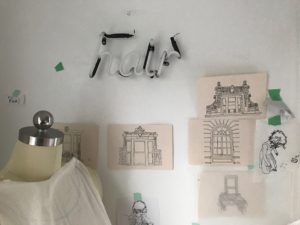
Currently, the artist is illustrating a children’s book inspired by her bright-eyed daughter. As she works out the best way to steer her bi-racial, dual citizen through 2017, she keeps in mind other mothers like herself. She is also hoping to create a book of the shoe portraits she has been doodling in between stops on New York City transit. Be sure to follow the artist on Instagram for updates.
Leslie Jiménez met with Diana Ledesma at her Studio on January 12, 2017.
Images courtesy of the artist.
More Reading:
Santo Domingo’s natural hair movement
Living in my skin- women artists showcase the Caribbean experience
About the author:
Diana Ledesma is an arts professional living in New York City. She obtained her masters from New York University in 2016, completing her thesis on the status of the Mexican American art market.
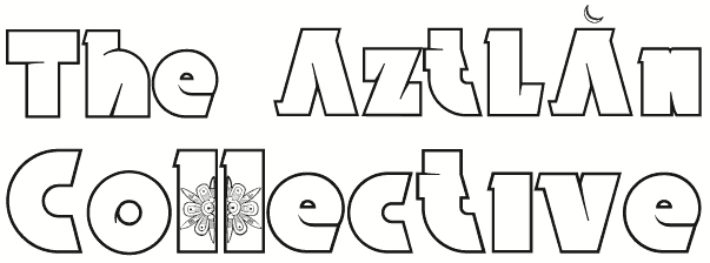


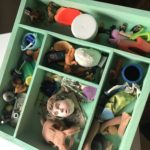
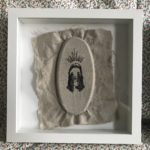
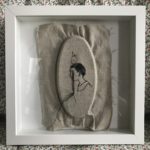

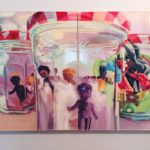
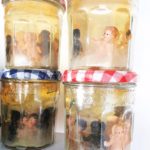
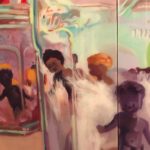
Love your description of Leslie and her work. Keep up the good work of giving these amazing artists a platform to shine! <3